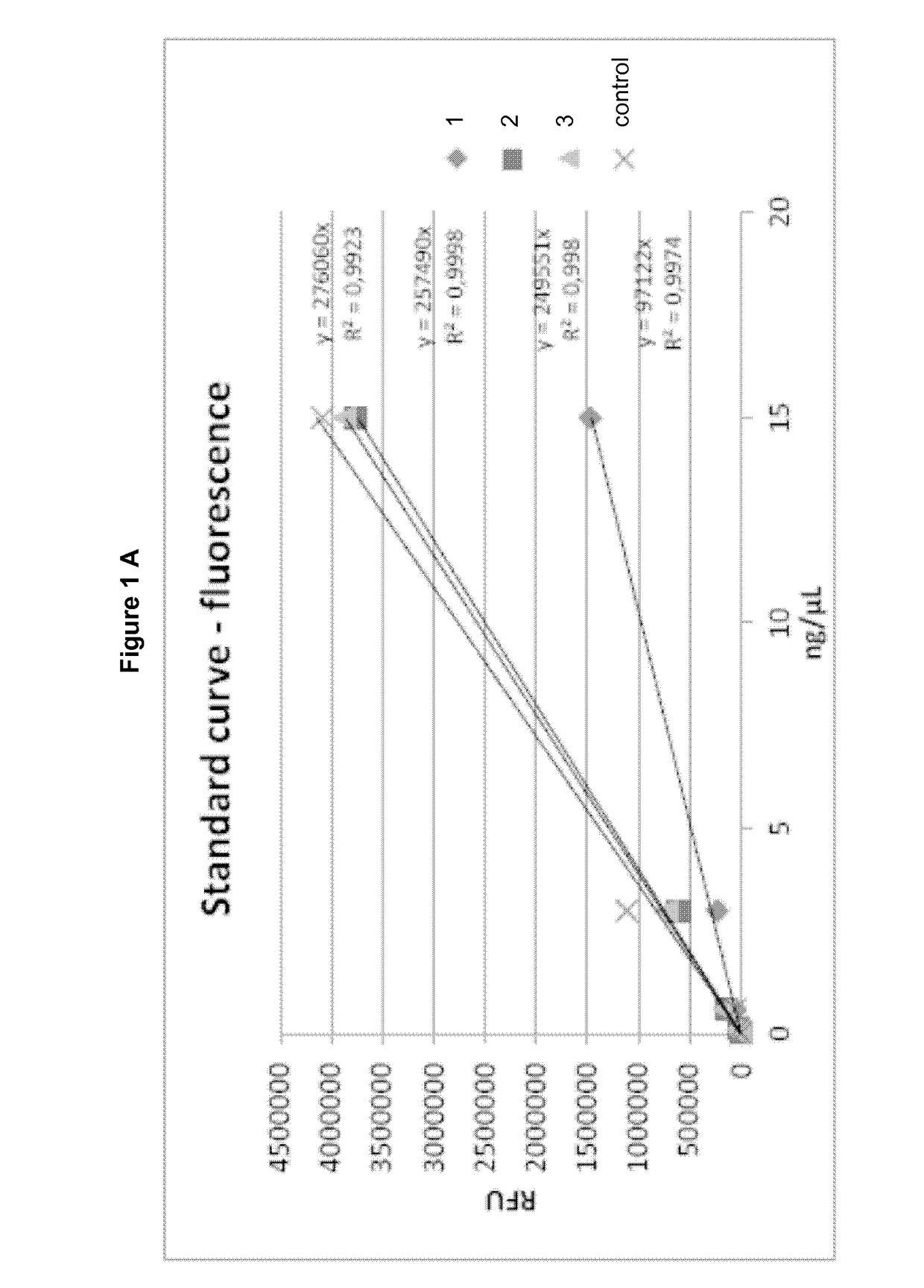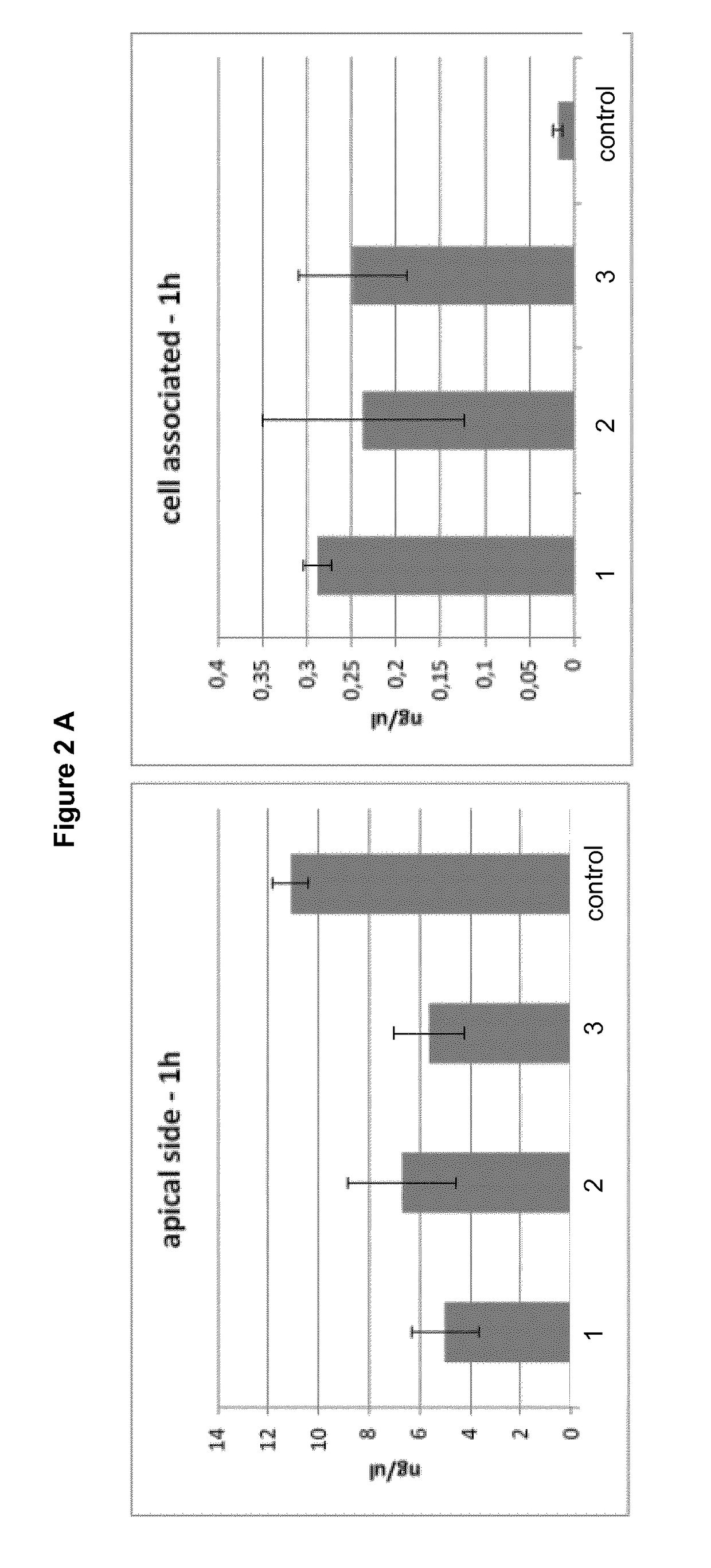Pharmaceutical formulation having reverse thermal gelation properties for local delivery of nanoparticles
a technology of nanoparticles and gelation properties, which is applied in the direction of capsule delivery, synthetic polymeric active ingredients, microcapsules, etc., can solve the problems of colorectal cancer (crc) being a major health problem, uncontrollable distribution, and lack of effectiveness, so as to reduce the critical micelle concentration, stabilize pharmaceutical formulations, and high viscosity at lower temperatures
- Summary
- Abstract
- Description
- Claims
- Application Information
AI Technical Summary
Benefits of technology
Problems solved by technology
Method used
Image
Examples
example 1
on of an Inventive Pharmaceutical Formulation
[0093]150 mg of poloxamer 407 (Lutrol®F127 from BASF; Germany) and 150 mg poloxamer 188 (Lutro®F68 from BASF; Germany) were mixed together with 20 mg DL-α-Tocopherol (Hanseler) and this mixture was added to 610.2 mg pre-cooled water (Aqua ad injectabilia from BBraun Melsungen; approx. 5° C.) in a transparent glass beaker and constant agitation with a magnetic stirring bar was kept for 24-48 hours at 4° C.
[0094]Subsequently, 69.8 mg of Qdot®655 solution (Qdot®655 dipeptide (His-His) quantum dots *commercial use*; Lot Number: 812401-1 and 812401-2, in 50 mM borate buffer, pH 8.3 from life technologies brand of Thermo Fisher Scientific, USA) was added to 930.2 mg of the pharmaceutical formulation and mixed to homogeneity at room temperature. Resulting pharmaceutical formulations were stored at 4° C. (2° C. to 8° C.) under light protected conditions.
example 2
on of an Inventive Pharmaceutical Formulation
[0095]180 mg of poloxamer 407 (Lutrol®F127 from BASF; Germany) and 50 mg poloxamer 188 (Lutrol®F68 from BASF; Germany) was added to 700.2 mg pre-cooled water (Aqua ad injectabilia from BBraun Melsungen; approx. 5° C.) in a transparent glass beaker and constant agitation with a magnetic stirring bar was kept for 24-48 hours at 4° C.
[0096]Subsequently, 69.8 mg of Qdot®655 solution (Qdot®655 dipeptide quantum dots *commercial use*; Lot Number: 812401-1 and 812401-2, in 50 mM borate buffer, pH 8.3 from life technologies) was added to 930.2 mg of the pharmaceutical formulation and mixed to homogeneity at room temperature. Resulting pharmaceutical formulations were stored at 4° C. (2° C. to 8° C.) under light protected conditions.
example 3
on of an Inventive Pharmaceutical Formulation
[0097]180 mg of poloxamer 407 (Lutrol®F127 from BASF; Germany) and 100 mg poloxamer 188 (Lutrol®F68 from BASF; Germany) was added to 650.2 mg pre-cooled water (Aqua ad injectabilia from BBraun Melsungen; approx. 5° C.) in a transparent glass beaker and constant agitation with a magnetic stirring bar was kept for 24-48 hours at 4° C.
[0098]Subsequently, 69.8 mg of Qdot®655 solution (Qdot®655 dipeptide quantum dots *commercial use*; Lot Number: 812401-1 and 812401-2, in 50 mM borate buffer, pH 8.3 from life technologies) was added to 930.2 mg of the pharmaceutical formulation and mixed to homogeneity at room temperature. Resulting pharmaceutical formulations were stored at 4° C. (2° C. to 8° C.) under light protected conditions.
PUM
 Login to View More
Login to View More Abstract
Description
Claims
Application Information
 Login to View More
Login to View More - R&D
- Intellectual Property
- Life Sciences
- Materials
- Tech Scout
- Unparalleled Data Quality
- Higher Quality Content
- 60% Fewer Hallucinations
Browse by: Latest US Patents, China's latest patents, Technical Efficacy Thesaurus, Application Domain, Technology Topic, Popular Technical Reports.
© 2025 PatSnap. All rights reserved.Legal|Privacy policy|Modern Slavery Act Transparency Statement|Sitemap|About US| Contact US: help@patsnap.com



